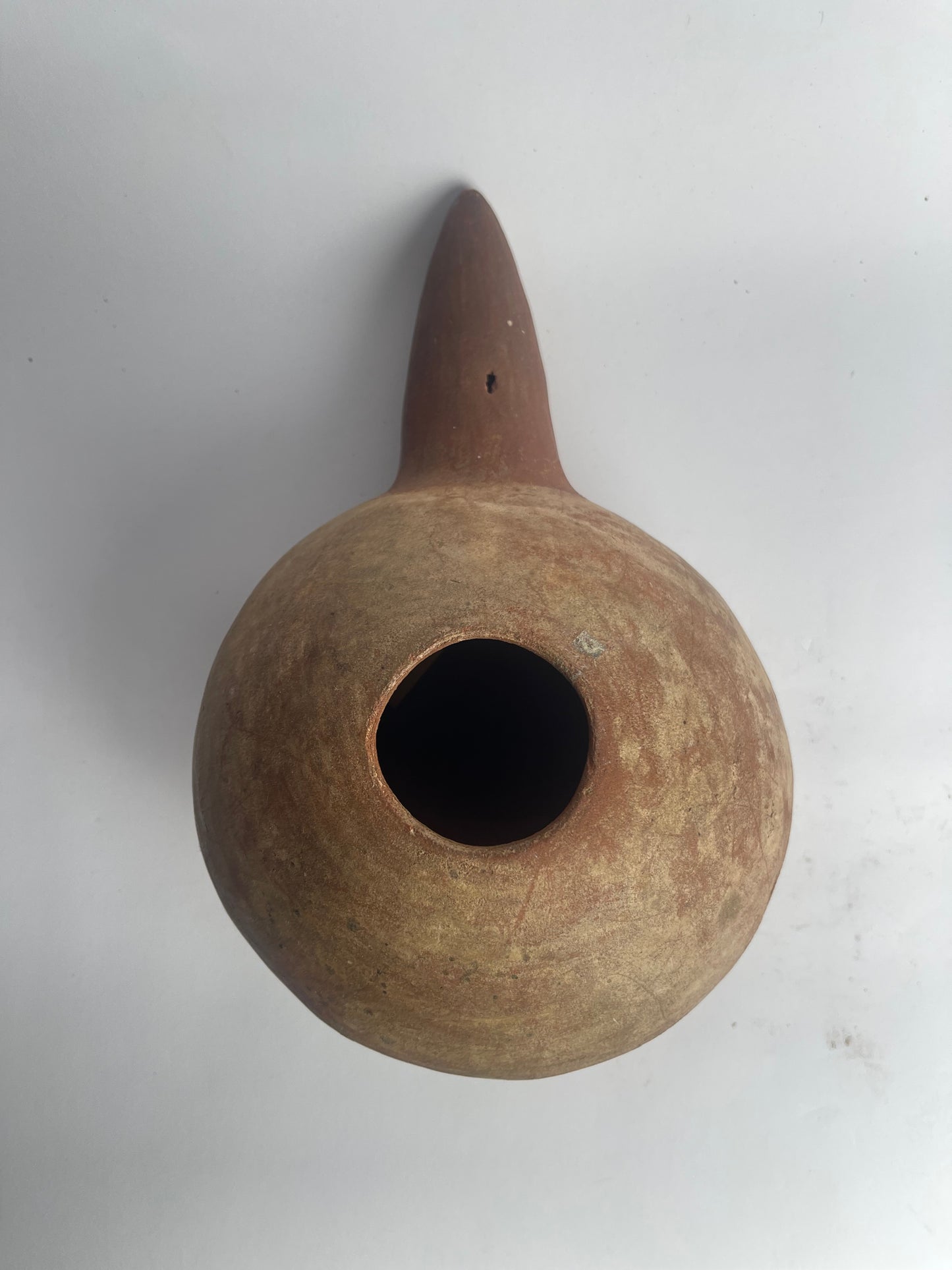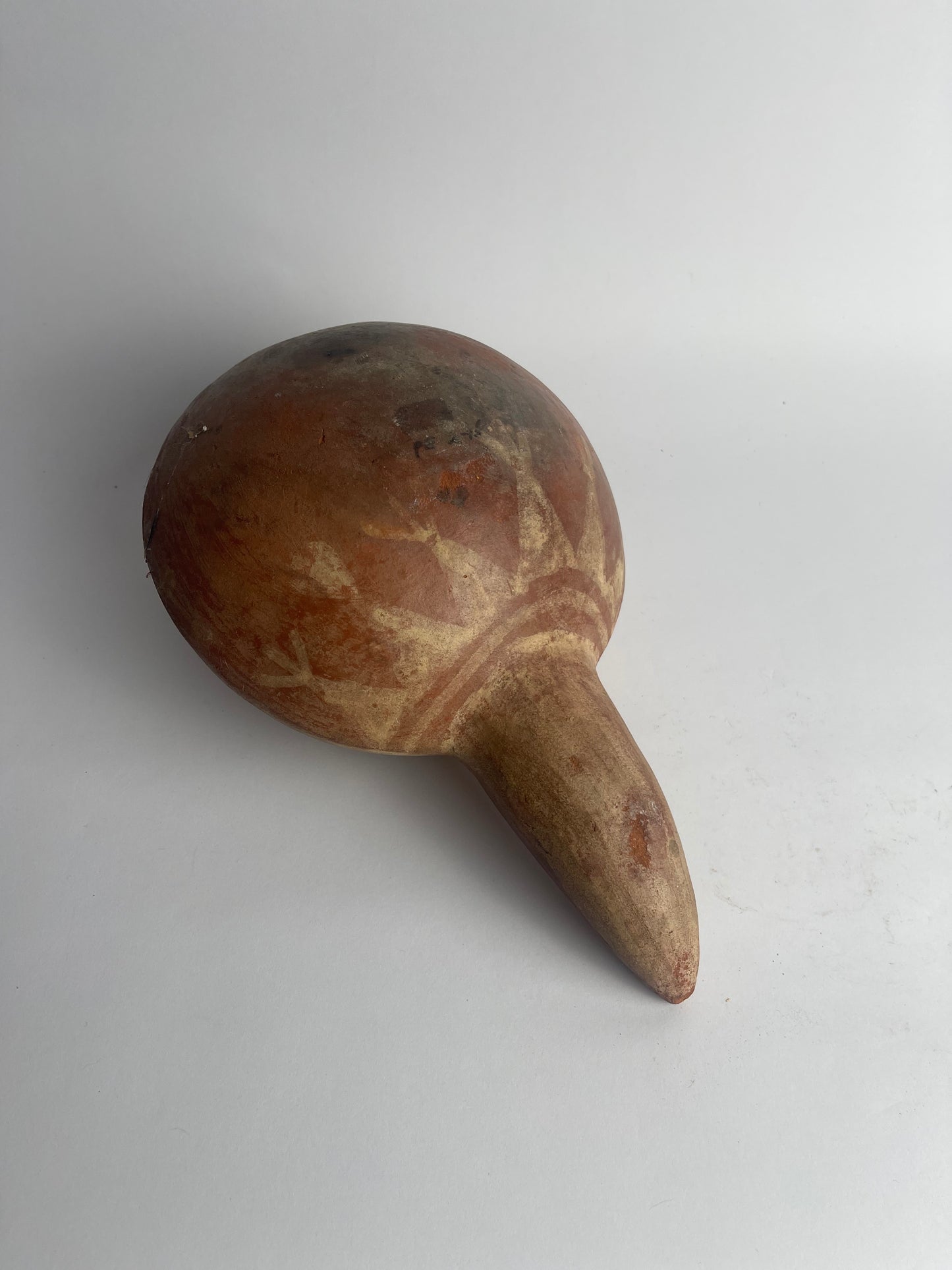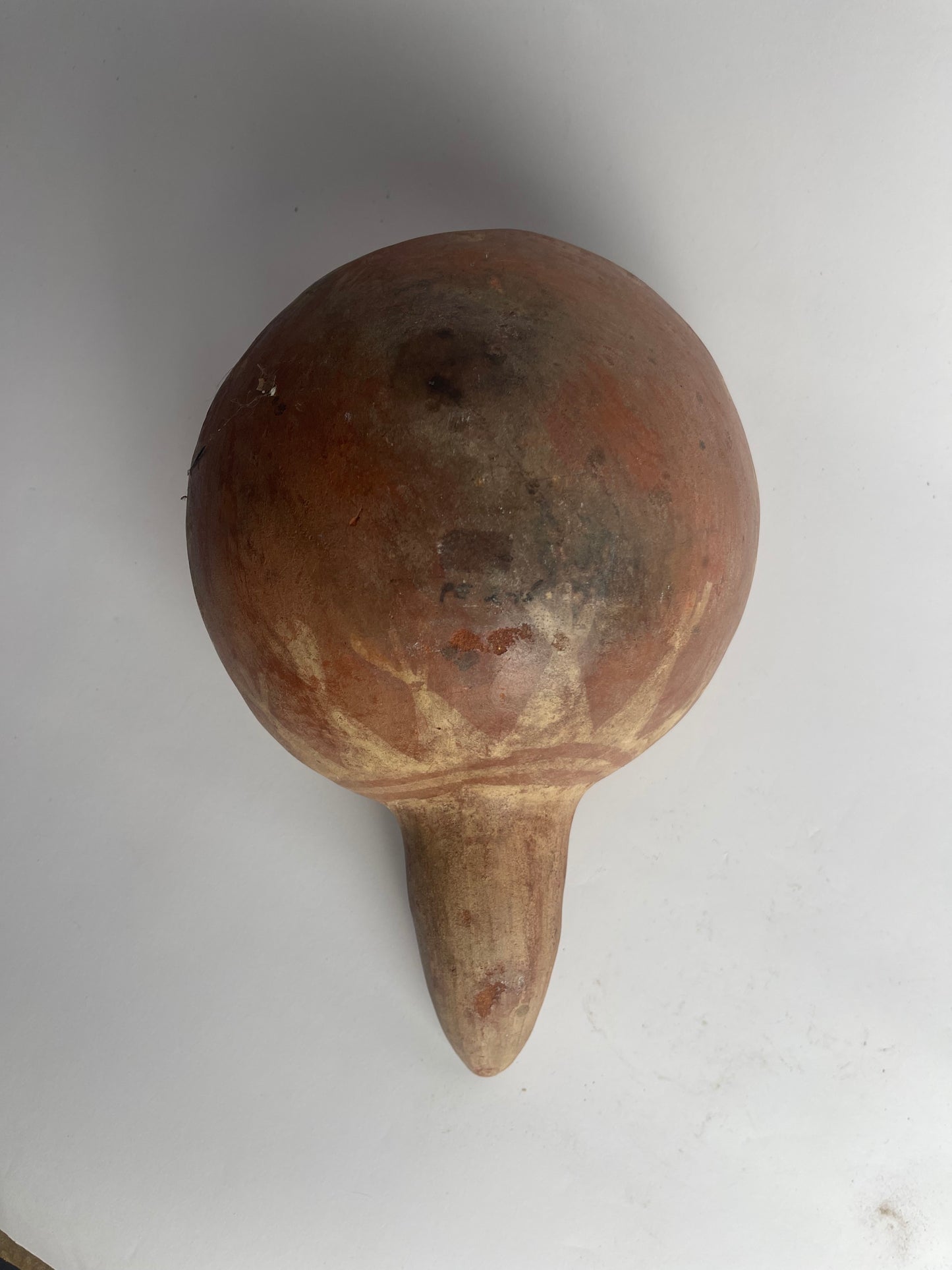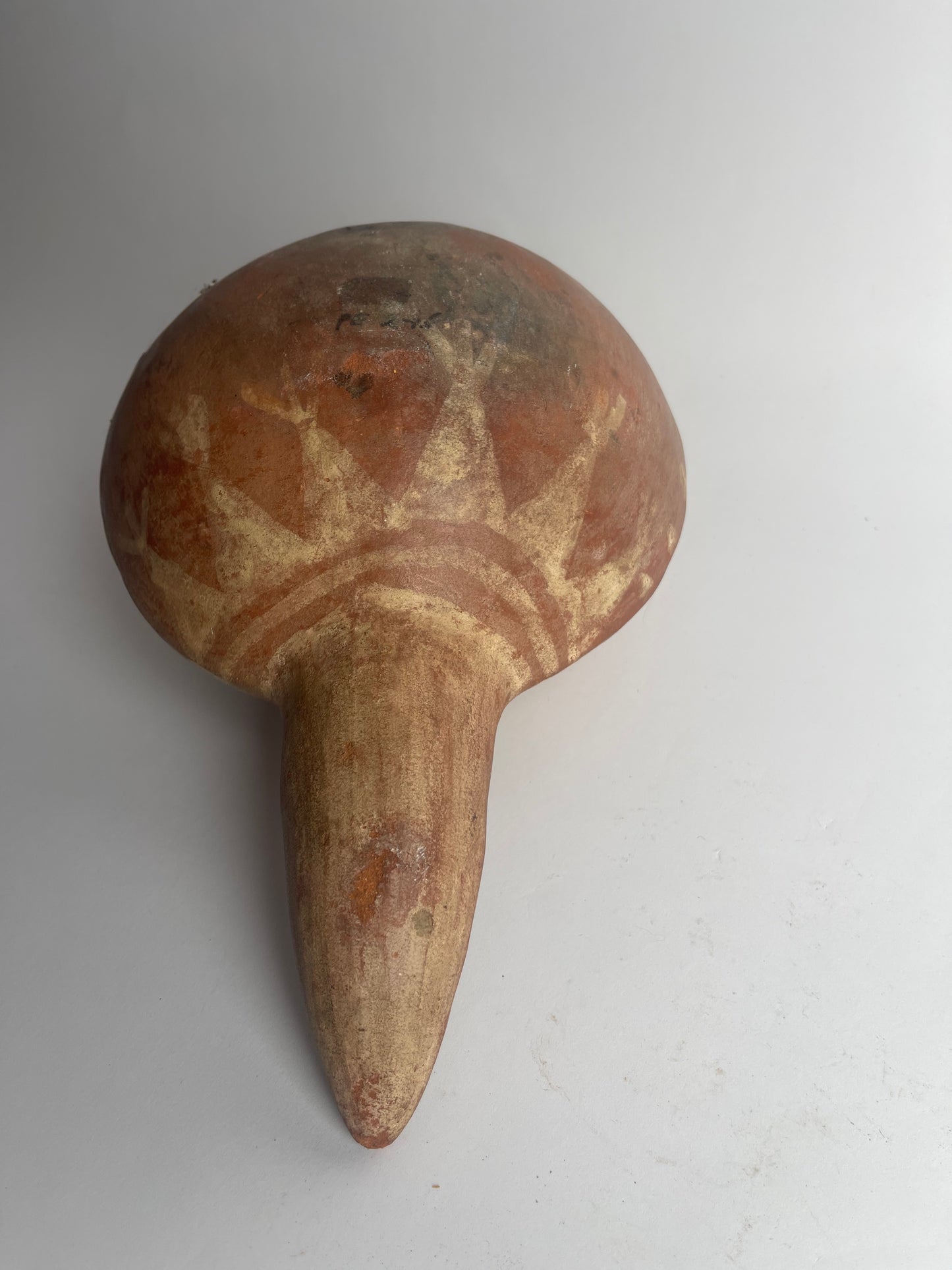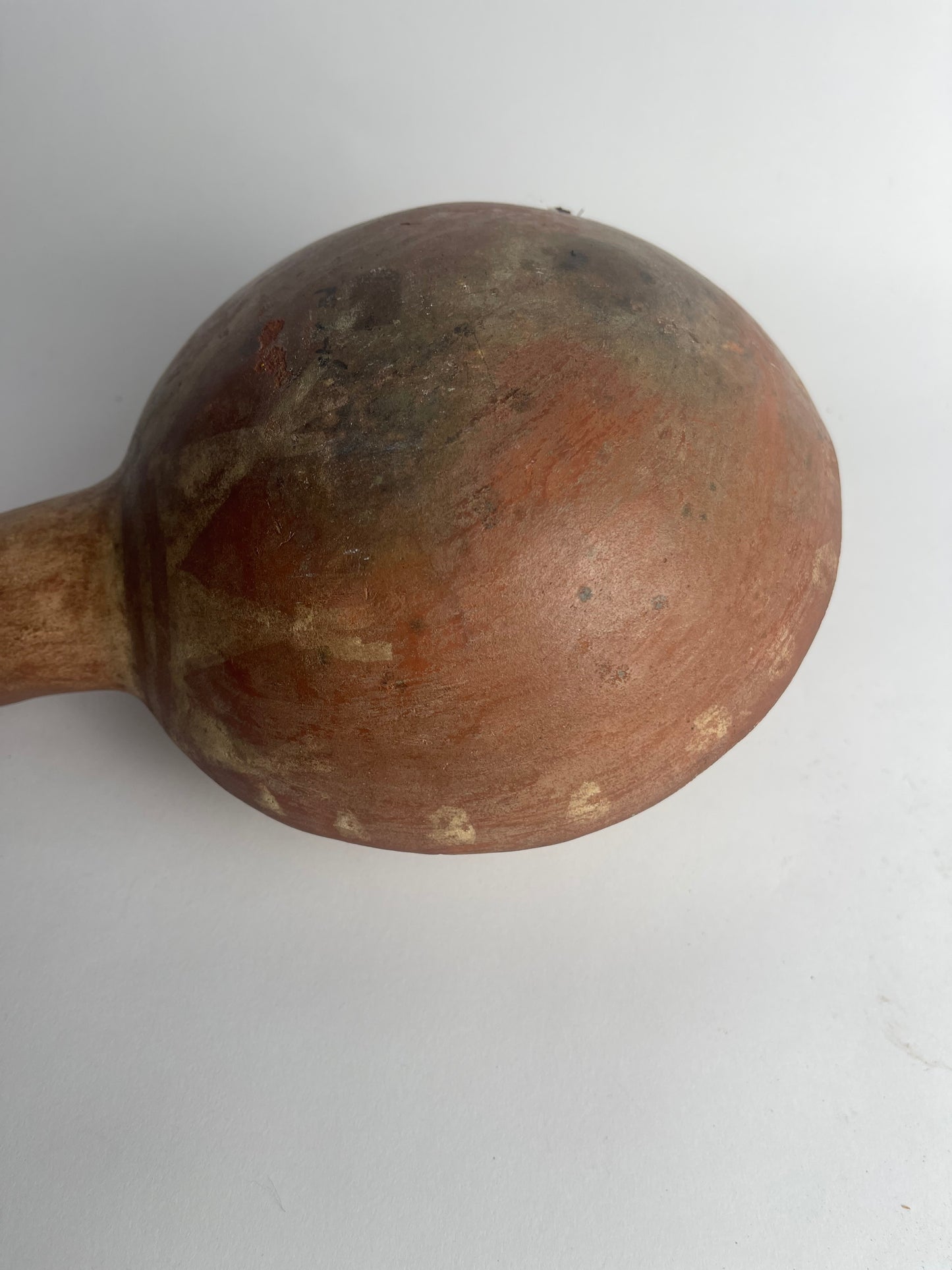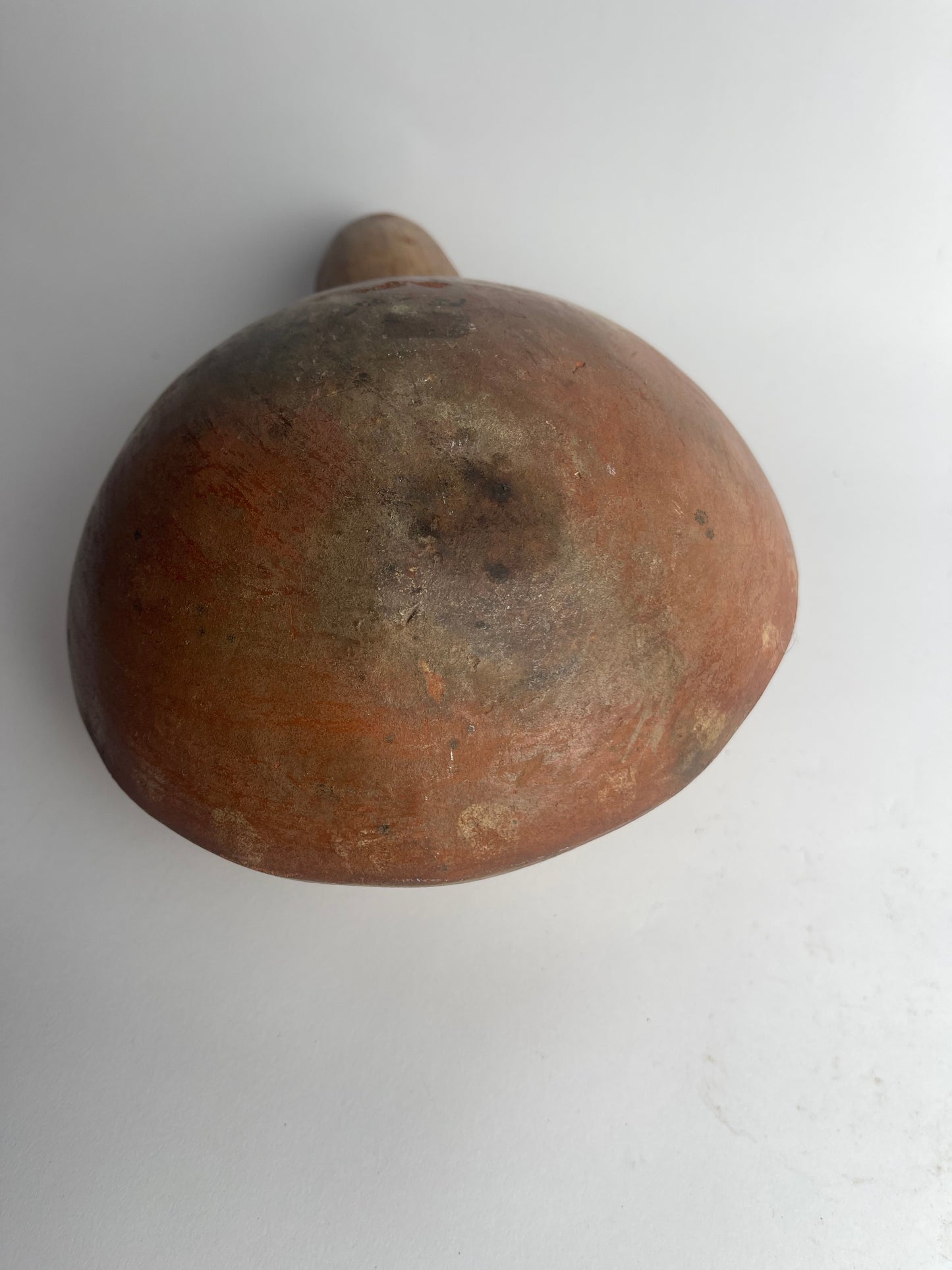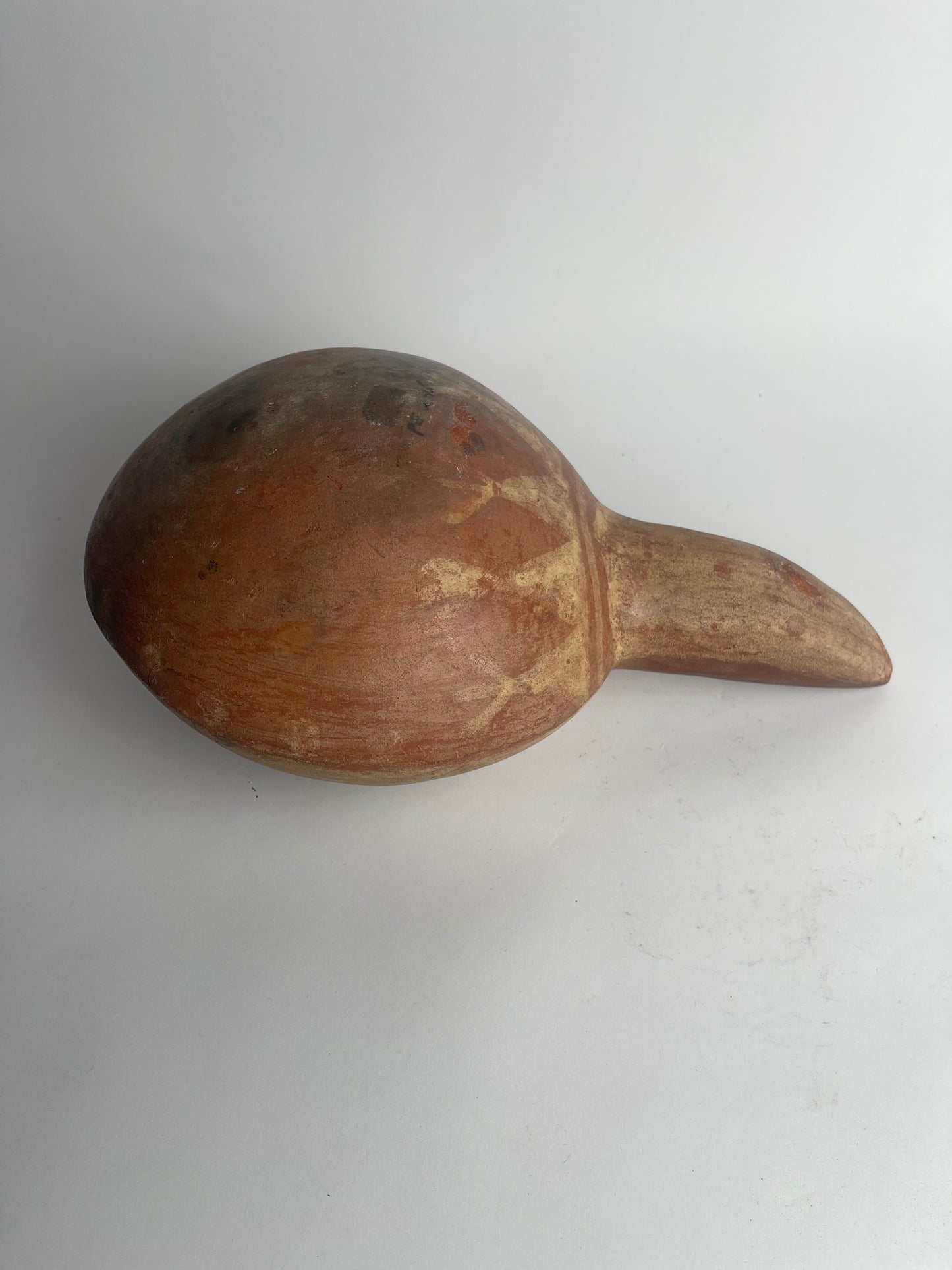Dipper
Dipper
For questions email hello@curiocollect.com
Peru
400-700 AD
This Moche ceramic dipper, dating to circa 100–800 CE, is traditionally known as a “cornpopper,” though modern scholarship suggests its function was ritual rather than culinary. Made in northern Peru, the vessel consists of a long handle attached to a small, perforated bowl, carefully crafted from fine, burnished clay.
Earlier interpretations proposed that such vessels were used to roast or pop maize, owing to their pierced bowls and extended handles. However, archaeologists now argue that the fragile ceramic construction makes regular use over fire unlikely. Instead, these dippers are understood as ceremonial implements, possibly used for sprinkling liquids, burning incense, or other ritual acts associated with maize and fertility. The holes in the bowl may have served a symbolic purpose, referencing fire, transformation, or the scattering of offerings, rather than functioning as a practical sieve.
Far from everyday tools, these dippers embody the ritual centrality of maize in Moche culture, connecting food, fire, and spirituality. Today they are valued not as “cornpoppers,” but as rare survivals of Andean ceremonial practice, blending inventive form with deep symbolic resonance.
Condition: wear to surface, one hole in neck
10.0 in. length
7.0 in. width
4.0 in. height
Couldn't load pickup availability
Share
